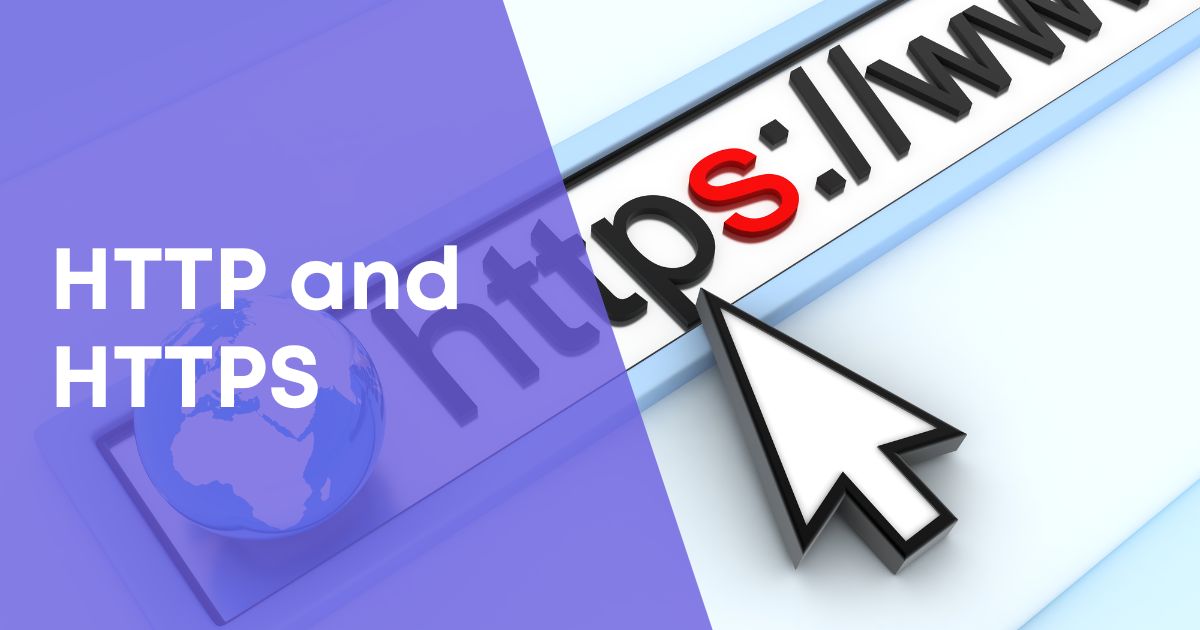HTTP and HTTPS: How it Affects SEO
HTTP (Hypertext Transfer Protocol) and HTTPS (Hypertext Transfer Protocol Secure) are foundational protocols for transmitting data on the internet. While HTTP facilitates communication between web browsers and servers, HTTPS adds a crucial layer of security through data encryption.
Recognizing the significance of website security in SEO is pivotal, as it directly influences search rankings and user trust. Google, in particular, places a strong emphasis on the security of websites, with HTTPS playing a key role in enhancing overall website security.
This blog post aims to provide a detailed exploration of the differences between HTTP and HTTPS, shedding light on their implications for SEO. By gaining a comprehensive understanding of these protocols, website owners can make informed decisions to improve both the security of their sites and their rankings on search engines.
Understanding HTTP and HTTPS
HTTP, or Hypertext Transfer Protocol, forms the backbone of data communication on the World Wide Web. It facilitates the exchange of information between a user’s web browser and the server hosting a website.
On the other hand, HTTPS, the secure counterpart of HTTP, encrypts data during transmission. This encryption ensures a secure and private connection between the user’s browser and the web server, effectively preventing unauthorized access.
The key differences between HTTP and HTTPS lie in the security features that the latter employs. HTTPS incorporates robust encryption mechanisms, safeguarding sensitive data from potential interception.
This secure protocol plays a crucial role in protecting user information, including login credentials, personal details, and financial transactions, thereby enhancing overall online security.
Resource: get info on cybersecurity frameworks here
The SEO Landscape
Google’s commitment to website security is evident in its ranking algorithm, where secure websites are given precedence. The incorporation of HTTPS as a ranking signal by Google further underscores the importance of adopting secure protocols. This move aligns with Google’s broader goal of creating a safer online environment, encouraging website owners to prioritize security for better visibility in search results.
In addition to SEO considerations, the user experience and trust are pivotal aspects influenced by the choice between HTTP and HTTPS. User perception of security significantly impacts their preferences, with secure websites instilling greater confidence. Trust indicators, such as SSL/TLS certificates, play a crucial role in signaling a secure connection to users. These indicators positively influence user trust, leading to reduced bounce rates and improved overall user engagement.
In conclusion, this content structure offers a concise yet informative exploration of the HTTPS vs HTTP debate. By delving into the technical aspects and their ramifications for SEO and user experience, website owners can make well-informed decisions regarding the security protocols of their websites.
SEO Benefits of HTTPS
Improved Search Engine Rankings
- Case Studies and Examples One of the compelling arguments in favor of HTTPS lies in numerous case studies showcasing the positive impact on search engine rankings. Instances, where websites transitioned from HTTP to HTTPS and experienced notable improvements in their rankings, provide concrete evidence of the correlation. These case studies serve as powerful illustrations of how prioritizing website security through HTTPS can contribute to enhanced visibility in search results.
- Google’s Official Statements Google, as a major player in the search engine domain, has consistently emphasized the importance of website security in determining search rankings. The search giant’s official statements explicitly highlight HTTPS as a positive ranking signal. By aligning with Google’s recommendations, website owners can tap into the search engine’s algorithmic preferences, leading to improved visibility and ranking outcomes.
Enhanced User Experience
- Reduced Bounce Rates Beyond its impact on SEO, HTTPS significantly contributes to a positive user experience by reducing bounce rates. Users are more likely to engage with a website that provides a secure connection, as indicated by the padlock icon in the browser. The assurance of a secure environment instills confidence in users, encouraging them to explore and interact with the site’s content, ultimately lowering bounce rates.
- Increased Conversion Rates The trust established through a secure connection extends to online transactions and interactions. Websites using HTTPS are more likely to witness increased conversion rates, as users feel more secure providing sensitive information, such as personal details and payment credentials. This heightened sense of security translates into a positive impact on the website’s overall conversion metrics.
Common Challenges and Solutions
Mixed Content Issues A common challenge during the transition to HTTPS is the occurrence of mixed content issues. This arises when secure HTTPS pages contain insecure HTTP resources. Resolving these issues involves identifying and updating all resources to use secure HTTPS URLs, preventing potential security warnings in browsers.
Impact on Page Load Speed While HTTPS encryption adds a layer of security, it can impact page load speed. Addressing this challenge requires optimizing server performance, leveraging content delivery networks (CDNs), and implementing best practices for website optimization. Balancing security and performance is crucial to ensuring a positive user experience post-migration.
Migrating from HTTP to HTTPS
Acquiring an SSL Certificate The first step in transitioning from HTTP to HTTPS involves acquiring a valid SSL (Secure Sockets Layer) certificate. This digital certificate encrypts the data exchanged between the user’s browser and the web server, ensuring a secure connection. Numerous certificate authorities offer SSL certificates with varying features, allowing website owners to choose based on their specific needs.
Updating Internal Links and Resources Ensuring a seamless transition requires updating all internal links and resources to reflect the secure HTTPS protocol. This includes updating image URLs, scripts, and stylesheets. Failure to update these references can result in mixed content issues, potentially impacting the security and functionality of the website.
Implementing 301 Redirects To maintain SEO equity and ensure a smooth user experience, implementing 301 redirects is crucial. Redirecting HTTP URLs to their corresponding HTTPS counterparts informs search engines and users about the permanent move. This practice helps preserve the website’s search rankings and ensures that visitors are automatically directed to the secure version of the site.







